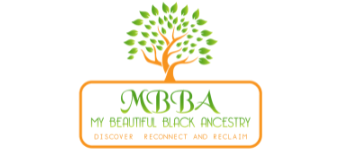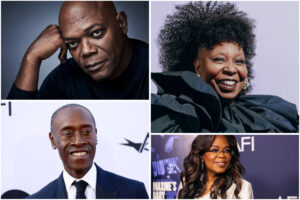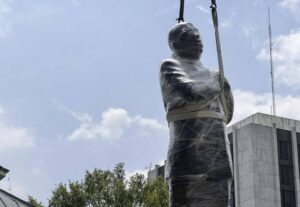Names are a very integral part of the culture in Africa. For an African, names are not just for fancy, they carry various deep meanings that revolve around situations and history. In Africa, a name can be a supplication, a blessing or a rebellion. The names of communities, animate and inanimate things in Africa all have a deeper meaning than just the surface words. Also, when a child is born, the name given to that child is believed to shape the child’s destiny. But how did African countries get their names? Seeing that there were no “African countries” before colonization and the scramble for Africa.
Many African countries changed their names after their gained indepence while some others still carry the names from colonization. Just incase you are wondering what informed the decision or choice of names of countries in Africa, below is a list of 7 African countries and how they got their names.
How These 7 African Countries Got Their Names
All African countries have unique names, the following 7 countries are our focus in this article.
1. Djibouti
A geothermal country with seismic activities, Djibouti is an east African country in the horn of Africa and one of the African countries with a unique name. Formerly known as French Somaliland as of 1894, and named after the founders of the Adal and Ifat Sultanates in the medieval ages and also called the French Territory of the Afars and Issas; but in time this small country managed to acquire one of the most unique and interesting names across the world. The name ‘Djibouti‘ has since sparked debates about its origins among the biggest ethnic groups, Somalis Issa and the Afars.
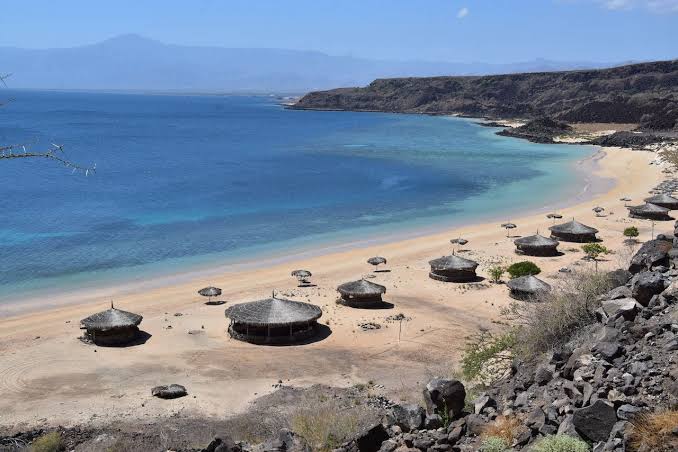
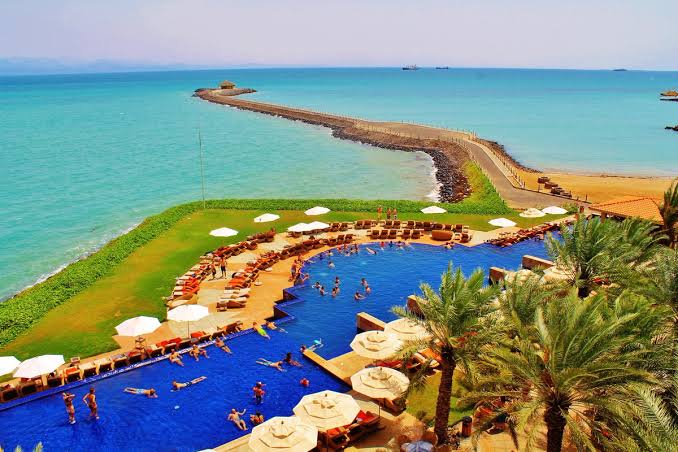
The Republic of Djibouti got its independence on the 27th of June 1977,and its name after a series of referendums. Also known as the pearl of the Gulf of Tadjourah; there has been several controversial explanations about the origins of the name; with answers varying according to the ethnicity of the Djiboutian lambda.
According to the Somali Issas’ legend, it is thought that the name Djibouti comes from the name of a beast called ‘buti‘ (‘bear’) that used to terrorize the population. Upon its defeat – ‘jab‘ in the Somali language – after a wilful, pertinacious chase, it was said that “meeshi butida lagu jabiyey“ (“the beast was defeated”), and so they chose to name the country after this legend.
The Afar version of The Name Djibouti
The Afar have two explanations for the word Djibouti. One being that, the uplands in the Afar language take the name ‘Gabood’. Given the land’s geographical position, Arab sailors coming here would have used this word; later referring to the port as ‘Gabuut’, ‘Gabuuti’, ‘Jabuuti’. On the other hand, it is also thought that a French military who had just freshly arrived, met a woman carrying a sort of cooking pot, and asked her the name of the place while pointing out to the ground. She thought he was asking about the pot, and answered accordingly: “Yi-buuti” (“My metal cooking pot”).
Another etymological explanation is the Yemeni sailors who used and still navigate the Gulf of Aden. The name Djibouti would be the plausible twist of the sentence ‘jâ-al-bût‘, which means ‘the boat has arrived’.
2. Burkina Faso
Burkina Faso was once called Upper Volta. The country named Upper Volta was given a new name in 1984 by then President Thomas Sankara, who chose the name Burkina Faso. This is one of the African countries that changed its name.
Originally, the name Haute Volta or Upper Volta, was given by the French European colonizers as an indicator or geographic pointer; and had no real attachment to the people of that region themselves. Thus Upper Volta was named for the region above the Volta river flowing in the area; the people of that country/area where thus known as the ‘Voltaics’ (Voltaiques in French). Since the river had three tributaries: the Black Volta, the white Volta, and the red Volta, Upper Volta’s flag also had those three colors. The Volta river also flew into Ghana, which was never known as the ‘Lower Volta’. According to Afrolegends.
On the 4th August in 1984, Thomas Sankara In revolutionary spirit, decided to change the country’s name to Burkina Faso. He chose two names after two main languages of the country; the Moore (or Mossi language) and the Dioula.
Burkina from Mòoré means ‘men of integrity‘, while Faso in Diouala means ‘fatherland‘. Thus the Burkina Faso is ‘the land of upright people‘ or ‘the land of honest people‘. The people of the country are known as the Burkinabé, where the suffix ‘bé’ comes from the Foufouldé language spoken by the Peulh people (a tribe found in many countries across West Africa), and means ‘men or women’. Thus, Thomas used three of the main languages in his country to choose a name that was truly representative of the country and its people. Sankara was then addressed as the PF or the President of the Faso. The national cloth made up of woven strips of cotton or silk was called faso dan fani.
3. Zimbabwe
Zimbabwe is also one of the African countries that changed its name. It went from being calledSouthern Rhodesia, to being called Zimbabwe.
Rhodesia was named after Cecil Rhodes, the British man who committed the greatest atrocities in Southern Africa; while establishing British rule over the different African countries in the late 19th century. Therefore, once the people of Southern Rhodesia became independent from British rule; They did the first right thing to claim a name that was theirs; and not the name of some foreign oppressor who committed the worst atrocities in their country.
Thus the name was chosen. The name “Zimbabwe” is a Shona term for Great Zimbabwe; an ancient ruined city in the country’s south-east whose remains are now a protected site; in the modern-day province of Masvingo. There are two theories on the origin of the word. The first theory holds that the word is derived from dzimba–dza–mabwe; translated from the Karanga dialect of Shona as; “large houses of stone” (dzimba = plural of imba, “house“; mabwe = plural of bwe, “stone“). The second theory claims that “Zimbabwe” is a contracted form of dzimba-hwe which means “venerated houses”; in the Zezuru dialect of Shona, and is usually applied to chiefs’ houses or graves.
The country was formerly known as Southern Rhodesia in 1898, as Rhodesia in 1965 and as Zimbabwe Rhodesia in 1979. The first recorded use of the name “Zimbabwe” as a term of national reference was in 1960; when it was coined by the black nationalist Michael Mawema; whose Zimbabwe National Party became the first to officially use the name in 1961. According to Mawema, black nationalists held a meeting in 1960 to choose an alternative name for the country; and the names Machobana and Monomotapa were proposed before his suggestion, Zimbabwe, prevailed.
4. Lesotho
Formally known as Basotholand, The Kingdom Of Lesotho is also one of the African countries that changed its name. Basotholand got its independence from Britain in 1966. The country changed its name from Basotholand to Lesotho after their independence. Bordered and surrounded South Africa, Lesotho is a very mountainous terrain; with her mountains separating her from the republic of South Africa.
Two-thirds of Lesotho consists of Mountains with the highest Peak, Mount Ntlenyana being 3,482 Metres, above sea level.
According to Britannica, Since the Neolithic Period, the mountain kingdom was the domain of Khoisan-speaking hunter-gatherers. In the 19th century the Sotho, led by Moshoeshoe I, took control of the region. It remained independent until it became a British protectorate, one of three British High Commission Territories (the others being Bechuanaland [now Botswana] and Swaziland).
By 1820 the Bantu people who speak the Sesotho language, and whom are known as the Basotho, already united into a kingdom. King Moshoeshoe who is thought to have been the first king of Basotholand; fought off the aggression of the Lifaqane who were supported by the legendary Shaka Zulu. But the incessant wars against external forces would continue for the Basotho throughout the middle of the 1800s.
However, the population of the inhabitants was not very dense, and as such not posing much of a threat to invaders. Therefore, lands belonging to the Basotho people were easy targets for other African peoples as well as invaders from European, particularly the Dutch, known as the Trekboers. The Trekboers for one were a nomadic bunch who settled and claimed ownership over a lot of lands in what is now called South Africa. In the 1830s, the Trekboers claimed Basotho land to the northwest. This and other acts of territorial aggrandizement forced the Basotho to seek a relationship with the British who promised to protect them against the Boers and other aggressors in 1868.
Britain and Lesotho
Prior to becoming a British protectorate, the Basotho people had fought against British colonization too. Indeed, at times, while fighting against the Boers, the Basotho would also be engaged in skirmishes against the British. Alas, Moshoeshoe and the Basotho people chose the suzerainty of the British compared to losing their lands to the Boers.
And so, when the British took over Basotholand, they drew again the map of the people’s territory in 1869. Much of what was lost in this new map was the western front of modern Lesotho, which is now the Free State Province in South Africa. If this had not happened, present-day Lesotho would most likely have been a considerably bigger country.
In 1884, the British threw away all pretensions of protection and declared Basotholand a colony of the United Kingdom. It stayed this way until 1966, when the British granted independence to the Basotho. Owing to a fairly uniform ethnic character, Basotholand’s clamor for independence was not fragmented as could be seen in the history of other countries’ fight for their sovereignty.
The new country was called Kingdom of Lesotho, which means “the place of the Sesotho speakers”. Lesotho continues to be a constitutional monarchy, a rarity on the continent.
5. Cameroon
Cameroon is a central African nation on the Gulf of Guinea bordered by; Nigeria, Chad, Central African Republic, Equatorial Guinea, Gabon and Republic of Congo.
It comprises 270 dialects, with French and English as official languages. Some other foreign languages are also part of the Cameroonian education system; such as German, Spanish, Italian, Chinese and Arabic.
Around 500 BC, The explorer Hanno of Carthage in North Africa (Tunisia) was the first foreigner reported to have seen Mount Cameroon. In the following Centuries, slaves and goods trade developed in the Northern part of Cameroon through the Sahara in North Africa and then around 200-100 BC, The first Bantu-tribes emigrated to the North of Cameroon from Nigeria. Traditionally, these tribes were made up of farmers and they needed a lot of space for their agriculture. The original inhabitants, the so-called “Pygmies”, were gradually forced deeper into the forests by the new comers. Later, Sao Culture developed in the South of Lake Chad and more than 150 different ethnic groups; lived in Cameroon (Today there are about 250 different ethnic groups!).
European explorers arrived the coast of Cameroon in the 15th century . They arrived in Douala, which is still the economic capital, through the Wouri River. They named it Rio dos Camaroes, which means the River of Pawn or Shrimps in Portuguese.
Later with the arrival of the Germans, they renamed it to Kamerun, which changed after the defeat of Germany in the World War I. The country was then divided between France and Britain. From that time on, Kamerun became Cameroon in the English part and Cameroun in the French part. The Republic of Cameroon is also known as the Africa in miniature due to its diverse landscape that represent the continents major climates zones. landmarks such as white beaches, mountainous areas, tropical rainforest, savannah grassland and sparse deserts can be found in his central African country.
6. Uganda
The name of independent Uganda comes from the ancient kingdom of Buganda, which rose to prominence in the 18th century in the East African territory that is now the area we call Uganda. While Buganda is the place, the people are referred to as the Ganda or Baganda. Like many of the people in East Africa, the Ganda is a Bantu ethnic group.
Currently, the Ganda account for more than 17% of Uganda’s population, making them the biggest ethnic group in the country. This invariably means that their Luganda language is also the most spoken.
Indeed, it is technically right to argue that Uganda is simply the modern Ganda nation. As a result of the centrality to Ugandan identity and history, the Ganda people are better described as a subnational kingdom as opposed to an ethnic group.
In pre-colonial times, the agrarian people established a strong kingdom by the middle 1800s. Crop cultivation and animal husbandry were not the only activities the Ganda engaged in. They were also acclaimed metallurgists.
So, how did an ethnic group become synonymous with a whole country One can critically argue that if British colonization had not interrupted the natural history of the people, we may even today still speak of a Buganda nation, in the strictest sense of the word.
Like many African peoples whose ways of life were disturbed by Europeans, the Ganda kept a social and political system. They had their faith and their deities, too.
But by the 1880s, they were split into different faiths, namely, those who identified with the local traditions; Catholics who had been proselytized by Iberian explorers; Protestants, as well as Muslims who had been influenced by Islam that had taken root in East Africa around the 16th century.
7. Mozambique
Mozambique, a scenic country in southeastern Africa. Rich in natural resources, biologically and culturally diverse, and has a tropical climate. Its extensive coastline, fronting the Mozambique Channel, which separates mainland Africa from the island of Madagascar; offers some of Africa’s best natural harbours. These have allowed Mozambique an important role in the maritime economy of the Indian Ocean; while the country’s white sand beaches are an important attraction for the growing tourism industry. Fertile soils in the northern and central areas of Mozambique have yielded a varied and abundant agriculture; and the great Zambezi River has provided ample water for irrigation and the basis for a regionally important hydroelectric power industry.
Mozambique was a Portuguese colony for about five centuries and its capital is called Maputo.
The Name Mozambique
The country was named Moçambique by the Portuguese after the Island of Mozambique, derived from; Mussa Bin Bique or Musa Al Big or Mossa Al Bique or Mussa Ben Mbiki or Mussa Ibn Malik, an Arabtrader who first visited the island and later lived there. The island-town was the capital of the Portuguese colony until 1898, when it was moved south to Lourenço Marques (now Maputo).
Between the first and fifth centuries AD, Bantu-speaking peoples migrated to present-day Mozambique from farther north and west. The Northern part lies within the monsoon trade winds of the Indian Ocean. Between the 7th and 11th centuries, a series of Swahili port towns developed there; which contributed to the development of a distinct Swahili culture and language. In the late medieval period, these towns were frequented by traders from Somalia, Ethiopia, Egypt, Arabia, Persia, and India.
The voyage of Vasco da Gama in 1498 marked the arrival of the Portuguese, who began a gradual process of colonisation and settlement in 1505. After over four centuries of Portuguese rule, She gained independence in 1975, becoming the People’s Republic of Mozambique shortly thereafter.
